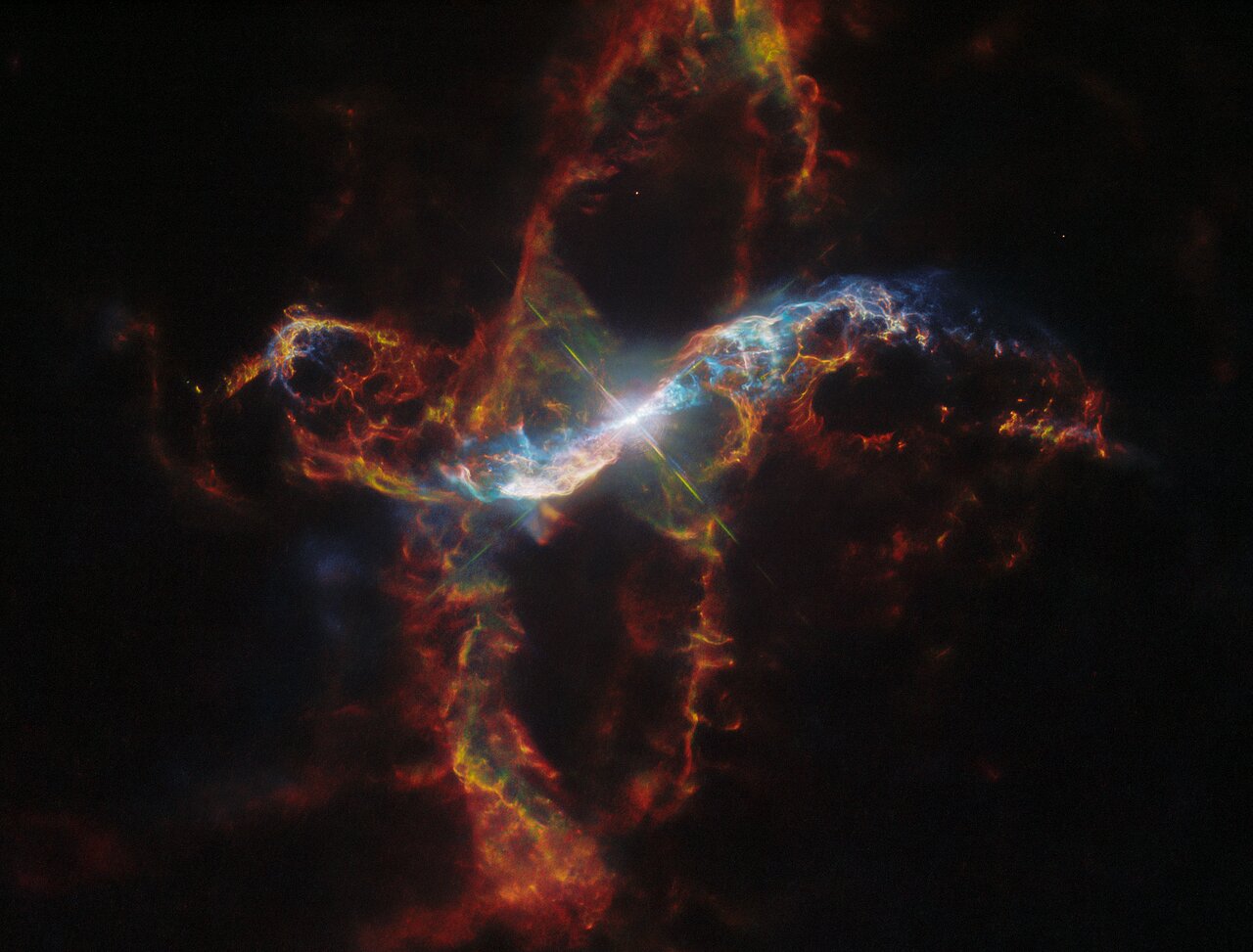Scientists used the Hubble Space Telescope to create a video of how the star R Aquarii has been “spitting” jets of matter for years. It is a symbiotic star system consisting of a white dwarf and a red giant.

Symbiotic star system R Aquarii
The Hubble Space Telescope has given scientists a detailed look at the R Aquarii star system, getting an amazing close-up shot of it and even creating a frame-by-frame video that shows how it has been ejecting jets of matter into space at high speed for several years, forming a nebula around it.
R Aquarii behaves quite strangely. With a period of 390 days, it increases its brightness about 750 times. At the same time, its luminosity becomes 5,000 times greater than the Sun’s. Edwin Hubble himself tried to solve its mystery.
We now know that R Aquarii is a so-called symbiotic system, of which we already know quite a bit. It is a stellar pair consisting of an inflated red giant and a white dwarf, with a constant jet of matter from the former to the latter.
Symbiotic binary systems differ from other binary systems by having the red giant itself as a pulsating variable star. At the same time, the white dwarf is in a highly eccentric orbit, so every time it approaches a larger luminosity, it pulls some matter onto itself, fueling the accretion disk.
Detailed look at the symbiotic system
What exactly happens during an explosion in a symbiotic star system, scientists still don’t have a clear idea. Therefore, they were very interested in R Aquarii. After all, at a distance of 700 light years from the Sun, it is the closest object of this type to us.
In addition, there is a small nebula known as Cederblad 211 around R Aquarii. It is thought to have formed as a result of previous explosions. And astronomers have a special interest in it, because during explosions in space, a large amount of not only hydrogen and helium, but also oxygen and carbon are ejected, that is, they are a potential source of those elements that make up living organisms on Earth.
The mechanism of the R Aquarii explosion occurs when the white dwarf begins to intensively accumulate material from the red giant in its accretion disk as it approaches it. Eventually, it falls on top of it, and an explosion occurs.
How explosions happen
The system ejects jets of matter into space, which eventually begin to twist, forming spirals. The Hubble Space Telescope captured them in its amazing image. The scale of the event is incredible even by cosmic standards. After all, R Aquarii “spits” matter at 400 billion kilometers. And this is 2,500 times more than the distance from the Earth to the Sun.
The most interesting thing is that scientists have tracked this process over time. Hubble took images of R Aquarii from 2014 to 2023. The five images show the rapid and dramatic evolution of the binary star and its nebula.
The system dims and brightens, as seen in the size of the red diffraction peaks around it, due to the strong pulsations of the red giant star. The nebula is depicted in predominantly green colors, but the bluer parts of it are in and out of view: this is because they are illuminated when a beacon-like beam of light from a binary rotating star passes over them.
According to esahubble.org


